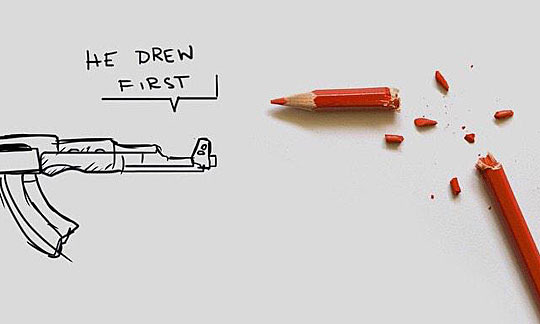This morning, as I was sifting through my pile of unread books trying to decide on which one to go for next I found one abandoned right next to John le Carré’s A Perfect Spy. It was the copy of Daniel Silva’s A Death in Vienna my Isareli friend had sent me years ago attaching a note of how it reminded her of “all the talks we had on [her] roof terrace” and how it summed it all up neatly to her. I felt guilty because even though I had promised I never got around to reading it in those rather chaotic years since.

Maybe I should have stuck with the le Carré.
In the six years (is it really that long already?) I have had this blog I have avoided writing about the Shoah and the way it is dealt with from the Austrian perspective. In part because for a long time I would not have found the words to do so and, for a bigger part, because I did not want this to be a blog that contributed to reducing thousands of years of Jewish – or Austrian, for that – cultural history to a hand full of decades.
The conversation I had, back in Tel Aviv, with a bunch of business partners probably sums it all up neatly. It is a stereotype, I know, but one that does not lack of truth:
“They say Austrians are the best diplomats in the world. Because you made the whole world think Hitler was German and Beethoven was Austrian.” he said, challenging me with a smirk of Israeli bluntness.
I smiled back, took the challenge: “But why? It is true after all, isn’t it?” Now I have his attention.
“Wasn’t Hitler a German when he died? And wasn’t Beethoven buried at Vienna’s Central Cemetery?”
I fixed his gaze with a light, almost childish smile as I added: “If you determined nationality by their place of birth – how many Isareli heroes would you have left?”
He could not help but conclude that the rumour about Austrians, after all, seemed to be quite correct.
It is true that we Austrians were slack in prosecuting our war criminals, I will not argue against it nor will I defend it. We were no angels, we had our monsters too. And it is true that, just like the rest of Europe, we have the far right creeping into our parliament again and again. Since the recent Gaza war I have even seen an upwards trend in anti-Jewish resentment and the same old stereotypes against “wealthy world-Jewry”. Frankly, for maybe the first time I have started to grasp why some of my Jewish friends have never quite felt safe in Austria. But reading Silva’s views today that, apparently, made him a #1 bestseller made my blood boil with his blatant, uncritical use of stereotype.
In a nutshell after introducing Vienna as a place where “men still wear feathered Tyrolean caps [and] women still found it fashionable to wear a Dirndl” (I had to double-check here to confirm the book was actually published in 2003) Silva goes on to describe the Austrian secret service as run by a ultra-right wing maniac not only acting far outside the law but also quite capable of torture and murder in order to cover up for his Nazi friends. And all of that in light of human-rights activist groups that knew about it but nobody would quite listen to them. I had the feeling, sometimes, that he saw Austria as almost of the brink to a second Holocaust at the drop of a pen although that notion might have been exaggerated by my own hurt pride into my homeland.
I was in Israel when former Austrian president and UN secretary general Kurt Waldheim died and I remember the uproar vividly. And when I read up on the subject what I found were pages and pages of 1980s Austrian newspaper reports condemning him; I found photographs of a wooden horse being dragged through the streets of Vienna with a plaque around its neck that said “I remember” in reference to Waldheim’s own claim not to remember a thing. And all of that even though even a Nazi-hunter as fierce as Simon Wiesenthal could never find any grounds to prosecute Waldheim for war crimes.
“Ich war nicht bereit, Kurt Waldheim als Nazi oder Kriegsverbrecher zu attackieren, weil er nach Einsichtnahme in alle mir zur Verfügung stehenden Unterlagen weder das eine noch das andere war.”
I was not ready to attack Kurt Waldheim as a Nazi or war criminal because after looking through all files available to me [I found] he was neither the one nor the other.
(Simon Wiesenthal, Das Amt und die Pflicht, in: Die Presse, Sonderausgabe “2000”, December 1999, S. 57f)
That is Austria too. The silent majority actually, I will argue.
Yes, there are still the elderly that will tell you casually over a cup of tea how “everything was better under Hitler”, our dirty laundry that will not come clean. And yes, there are also the young that once again will tell you the same old story of how “the Rothschilds” apparently somehow control the world. But that is not all Austria is just like during the occupation (I know I will be crucified if not blood-eagled for using the word) the frantic helpers of National-Socialist Germany were not all Austria was.
I grew up with stories – little stories, told casually, not as great deeds – of local farmers hiding Jews, of people leaving food out or giving clothes. It was only during my time in Israel that I stumbled upon some of the bigger stories too. The most documented maybe is that of hostess Liesl Geisler-Scharetter feeding thousands of Jewish DPs on their way to Italy and Israel. Her story, though, is but one of many that were never told outside the family; it is far from unusual for my simple, hospitable people. If you can do those little things, then you do. It is the Austrian nature that we do not care about making a big fuss about those things because to us they are self-explanatory. We do them because they are right, not because of what others will say about us.
But then, yes, we also do not care about being heroes either. It is the Austrian nature to hide in the pubs and the homes during hard times and wait until the storm blows over. And if we have to do the occasional Sieg Heil and raise a couple of flags in order to be left alone then, yes, we will do that too. And in our complacency we looked on as Millions were killed, retreating into the comfortable bubbles around us with our fingers in our ears so we could lock out the torment going on around us.
Silva, and I realise many alongside him, see a systemic issue where there is none. Are there right-winged nutcases sprinkled all over Austrian society? Certainly. But I cannot for the love of me imagine we have a Manfred Kruz that can get away with killing and torturing in the name of keeping it all under wraps. If there was I am convinced he would find an end not unlike that of the rogue Zalachenko club in Stieg Larsson’s The Girl Who Kicked the Hornet’s Nest; brought to justice by our very own constitutional protection units working within the law and following due process of a modern and just legal system.
Frankly, I am sick and tired of Austria being portrayed as a backwater still stuck in 1940s thinking every time attacking Germany becomes unfashionable for one reason or the other. I am sick and tired of the one-dimensional view most of the world seems to have and I know we Austrians make it easy because it is in our nature not to care too much about what others think. Most of us will not raise an eyebrow on reading Silva’s accounts because we do not think it is worth the effort of trying to change how some Americans that have probably never left their own continent see us. My own mum, if she would read this would probably tell me I was wasting my energy – and I guess she is right about it too.
– Migdalit






